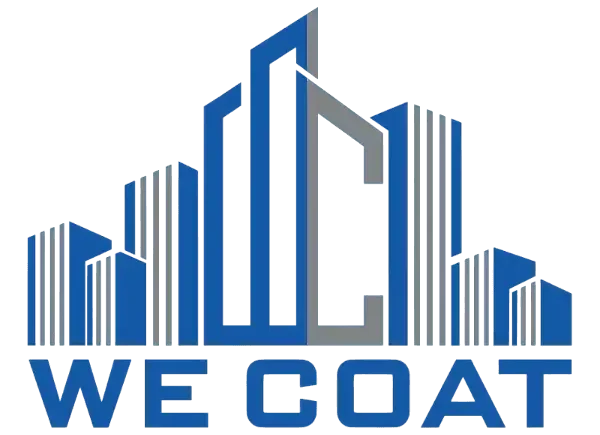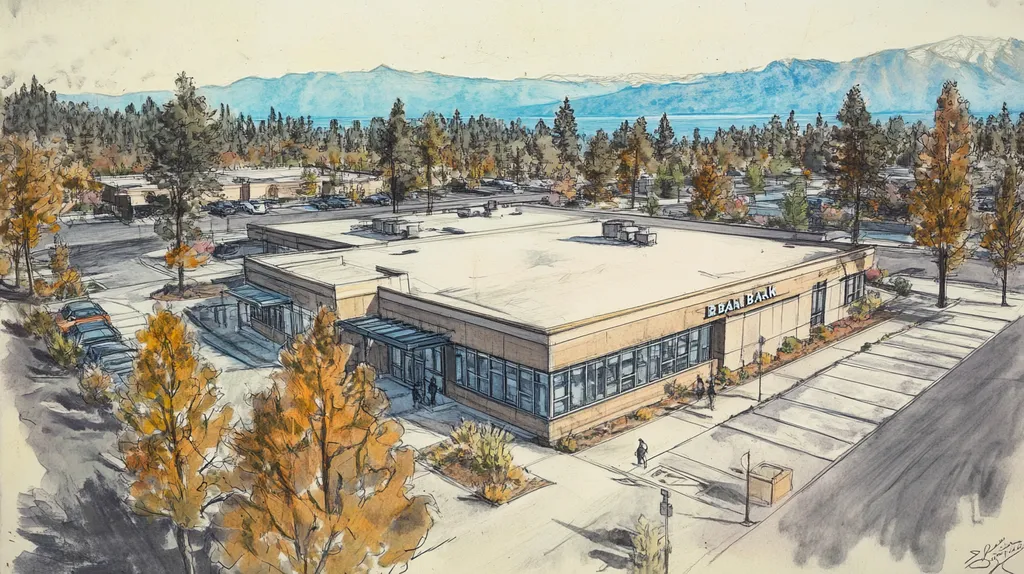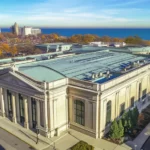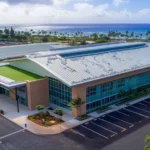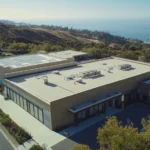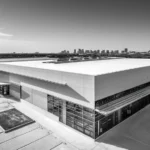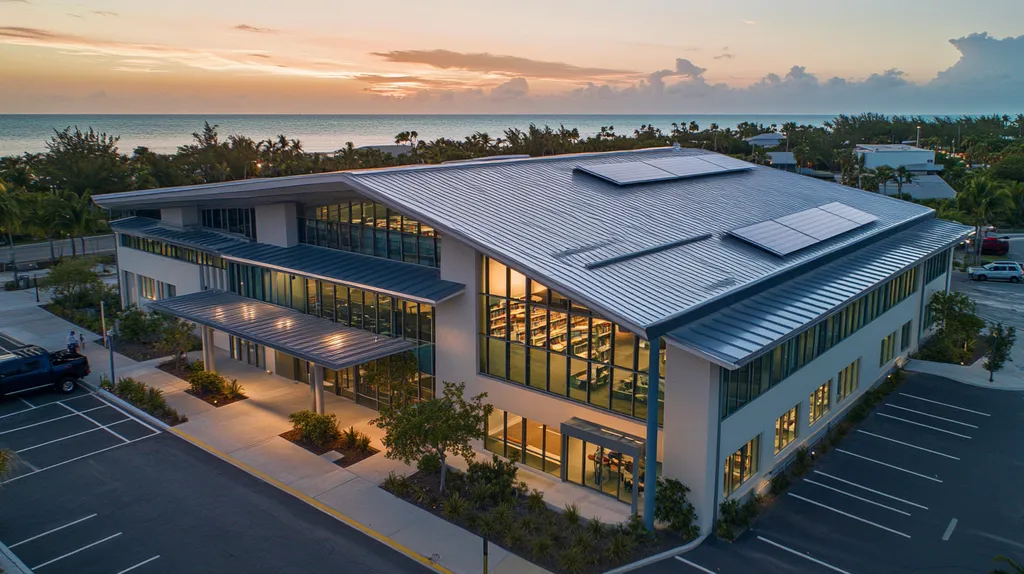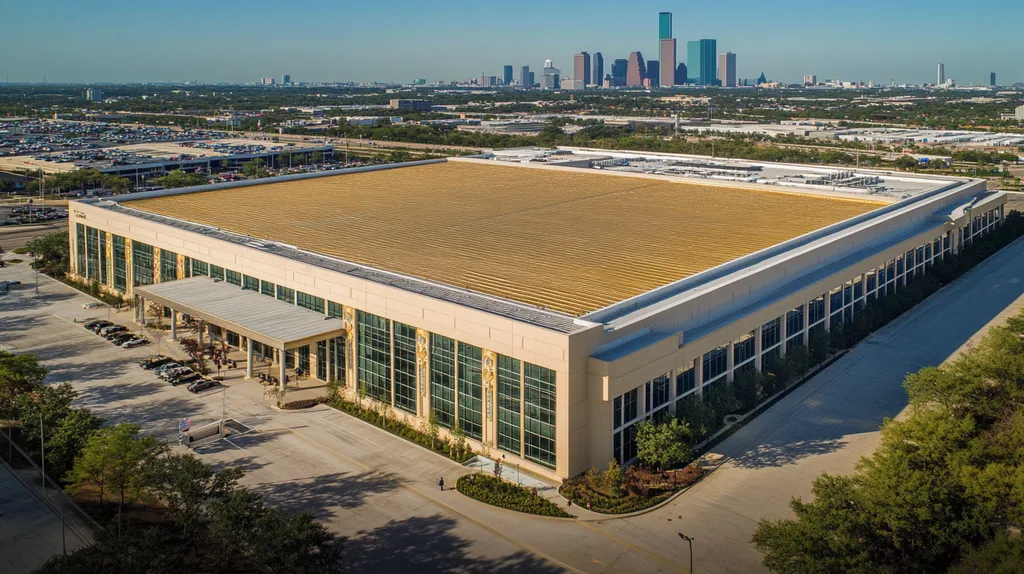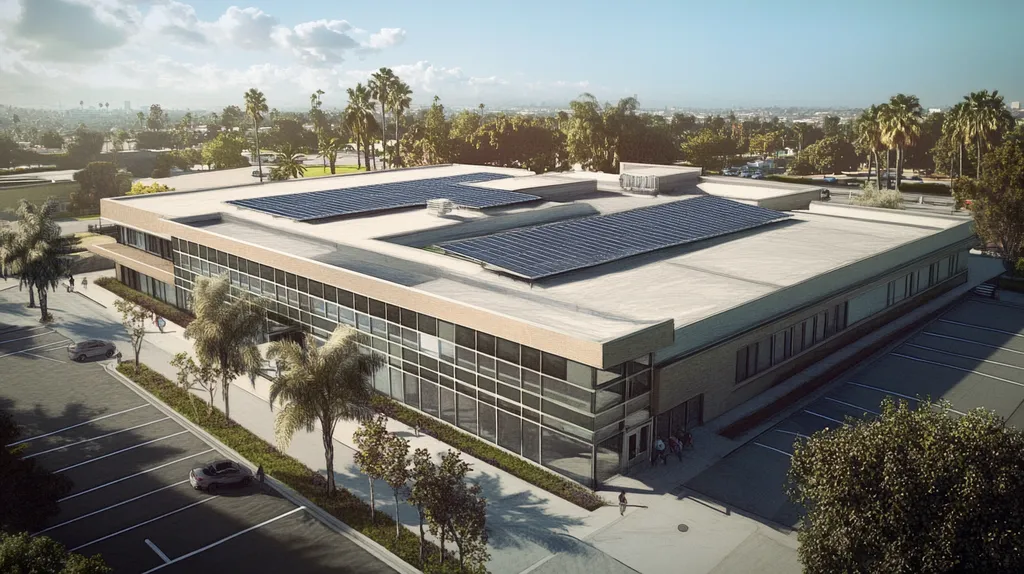Industrial roof failures cost facility owners over $2 billion annually, with 85% of these failures stemming from preventable factors that dramatically reduce system lifespan. Climate stress, maintenance oversights, and material selection errors transform 30-year roofing systems into 10-year liabilities.
Understanding the complex interplay between design, materials, and environmental factors has become crucial as industrial roofing systems face unprecedented challenges. From extreme weather events to evolving energy efficiency requirements, facility owners must navigate an increasingly complex landscape of roofing decisions.
This article examines the critical factors influencing industrial roof longevity, separating proven practices from costly misconceptions that threaten building integrity and operational continuity.
SECTION 1: COMMON MISCONCEPTIONS
Every year, industrial building owners lose millions of dollars due to preventable roofing failures caused by widespread misconceptions. A single incorrect assumption about materials or maintenance can cut a roof’s functional lifespan in half or lead to catastrophic failure during severe weather. Understanding and addressing these misconceptions is crucial for protecting your investment and avoiding unnecessary replacements.
Material Mythologies
The belief that all roofing materials perform similarly under industrial conditions leads to costly mistakes in material selection. Different membrane types react uniquely to chemical exposure, temperature fluctuations, and mechanical stress.
Many owners assume premium pricing automatically equals superior performance. However, the true measure of material value lies in its appropriateness for specific building conditions and local climate patterns.
Environmental factors dramatically impact material performance. A roofing system that excels in dry climates may fail prematurely in areas with high humidity or frequent temperature swings.
The durability of modern roofing materials depends heavily on proper installation and environmental conditions. Factors including local weather patterns, building use, and maintenance practices significantly affect roof longevity. (source: Cloud Roofing)
Lifespan Expectations Misunderstood
Many facility managers expect their roofs to last 20-30 years regardless of circumstances. This oversimplified view ignores critical factors like installation quality, environmental stress, and maintenance practices.
Building use patterns significantly impact roof longevity. Heavy foot traffic, equipment installation, or chemical exposure can dramatically reduce a roof’s functional lifespan.
Geographic location plays a crucial role in determining realistic life expectancy. Coastal facilities face different challenges than inland structures, while northern buildings must contend with freeze-thaw cycles.
Even the most durable roofing systems require ongoing attention to reach their potential lifespan. Without proper care, a 30-year roof might need replacement in less than 15 years.
Maintenance Misconceptions
The “set it and forget it” approach to industrial roofing leads to premature failure and unexpected replacement costs. Regular inspections and maintenance are essential for identifying and addressing minor issues before they become major problems.
Seasonal maintenance requirements vary significantly. Spring inspections should focus on winter damage, while fall maintenance prioritizes preparation for adverse weather conditions.
Small maintenance investments yield substantial returns. Addressing minor repairs promptly can prevent water infiltration that would otherwise compromise insulation and structural components.
Documentation plays a vital role in effective maintenance. Tracking repair history and inspection findings helps identify patterns and predict potential issues before they develop into emergencies.
Professional inspections complement routine maintenance checks. Expert assessments can identify developing problems that might be missed during regular visual inspections.
SECTION 2: PRACTICAL IMPLICATIONS
Every dollar invested in proper roofing practices can save facility owners ten dollars in future repairs and replacements. Despite this reality, many industrial facilities continue to face premature roof failures due to preventable oversights in design, climate adaptation, and maintenance. Understanding these practical implications isn’t just about protecting the roof – it’s about safeguarding operations, inventory, and worker safety while maximizing return on investment.
Design and Installation Impact
The success of an industrial roof begins with proper design calculations and load considerations. Even minor errors in slope calculations or drainage placement can create persistent issues that compromise the entire system.
Material selection must account for both immediate needs and long-term performance requirements. High-traffic areas need enhanced protection, while areas near chemical exhausts require specialized materials resistant to specific compounds.
Installation quality determines whether design specifications translate into actual performance. Proper flashing installation around roof penetrations, adequate membrane seaming, and correct fastener patterns are critical success factors.
The interface between different building systems demands special attention during design and installation. HVAC units, solar installations, and other rooftop equipment require carefully engineered transitions to maintain system integrity.
Climate Effects on Roofing Systems
Regional weather patterns dictate appropriate material choices and installation methods. Coastal installations face corrosion challenges from salt spray, while inland facilities must contend with different temperature extremes.
UV exposure represents a significant threat to roof longevity in southern regions. Reflective coatings and UV-resistant materials become essential components rather than optional upgrades.
Wind uplift forces vary dramatically by geographic location and building height. Proper edge securement and enhanced attachment patterns in corner and perimeter zones protect against these forces.
Temperature fluctuations create expansion and contraction stress that can compromise seams and flashings. Design must accommodate this movement while maintaining watertight integrity.
Maintenance Schedules and Standards
Effective maintenance begins with establishing clear inspection protocols. Monthly visual inspections should check for obvious damage, while quarterly technical inspections evaluate system components more thoroughly.
Drainage systems require particular attention during maintenance visits. Clogged drains can quickly turn minor ponding into major structural loads, especially during heavy rainfall events.
Seasonal maintenance requirements vary significantly. Spring inspections focus on winter damage repair, while fall maintenance emphasizes preparation for upcoming severe weather.
Documentation of all maintenance activities creates a valuable historical record. This information helps identify recurring problems, predict future issues, and maintain warranty compliance.
Regular evaluation of rooftop equipment conditions prevents damage from loose components or vibration. Equipment maintenance contractors must follow strict protocols to protect roof integrity during their work.
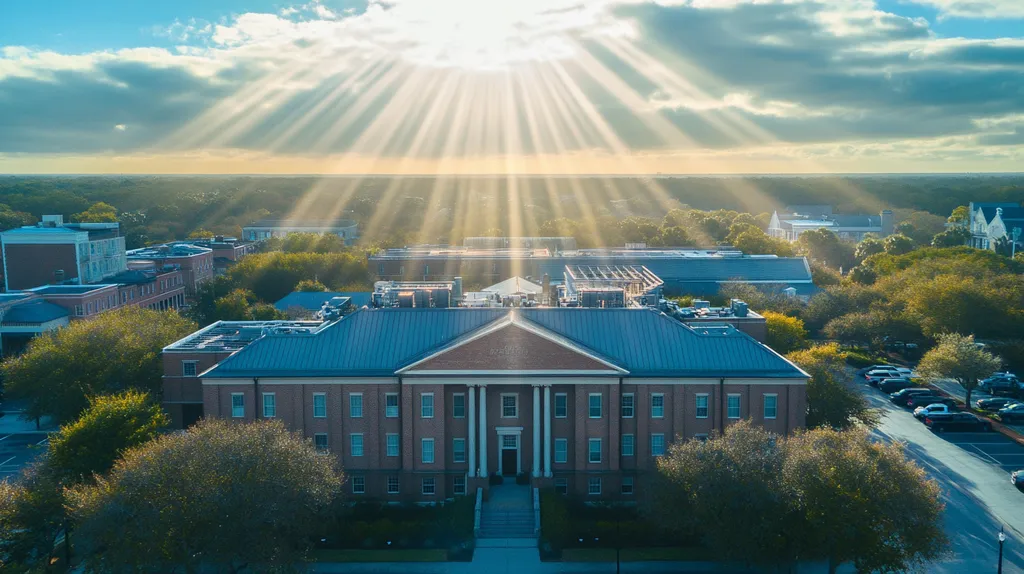
SECTION 3: COST OF MISINFORMATION
When industrial facility owners act on incorrect roofing information, the financial impact can be devastating. A single misguided decision about materials or installation methods can trigger a cascade of problems, from structural damage to business interruption. Recent industry data shows that premature roof failures due to misinformation cost industrial facility owners an average of $3-5 per square foot in emergency repairs – costs that could have been avoided with accurate information.
Economic Consequences of Poor Design
Design errors frequently manifest as catastrophic failures during severe weather events. Even minor miscalculations in drainage patterns or load distribution can lead to ponding water and potential collapse under heavy rain or snow loads.
The ripple effects of poor design extend far beyond the roof itself. Water infiltration can damage expensive equipment, compromise inventory, and create unsafe working conditions that trigger regulatory violations and worker compensation claims.
Emergency repairs resulting from design failures typically cost 300-400% more than planned maintenance. These unbudgeted expenses often force companies to divert funds from other critical operations or take on unexpected debt.
Proper ventilation and drainage systems are crucial elements often overlooked in initial designs. Without adequate attention to these components, moisture intrusion can dramatically reduce a roof’s expected lifespan. (source: Moser Roofing Solutions)
Hidden Costs of Inadequate Maintenance
The true cost of deferred maintenance extends far beyond visible repair expenses. When small issues go unaddressed, they create perfect conditions for accelerated deterioration that can cut a roof’s functional lifespan by 50% or more.
Insurance carriers increasingly scrutinize maintenance records when processing claims. Facilities with documented maintenance lapses often face higher deductibles, reduced coverage, or outright claim denials.
Production disruptions from unexpected roof repairs cost industrial facilities an average of $5,000-$10,000 per hour. These losses compound quickly when emergency repairs require extended facility shutdowns.
The inability to properly schedule repairs due to maintenance neglect forces facilities to pay premium rates for emergency service, often at 2-3 times the standard rate.
Financial Risks of Misinterpreted Data
Misunderstanding performance metrics leads to poor material choices that compromise long-term value. Many facility owners focus solely on initial costs while overlooking critical factors like regional climate compatibility and chemical resistance.
Energy efficiency calculations based on incorrect data can result in thousands of dollars in unexpected utility costs. Proper material selection and installation should reduce HVAC loads by 10-15%, but poor choices often achieve the opposite effect.
Warranty requirements frequently get misinterpreted, leading to voided coverage. Many owners discover too late that their maintenance practices failed to meet manufacturer specifications, leaving them fully exposed to replacement costs.
Inaccurate budget forecasting stemming from misinterpreted lifespan data forces facilities to make emergency capital expenditures. These unplanned expenses typically carry higher interest rates and less favorable financing terms.
SECTION 4: REALITY CHECK
Industrial roofing realities often diverge sharply from expectations, with devastating financial consequences. Recent industry data shows that over 80% of premature roof failures stem from misaligned expectations about material performance and maintenance requirements. Understanding these realities isn’t just about avoiding failure – it’s about maximizing the return on what is often a million-dollar investment while protecting critical operations beneath.
Materials and Lifespan Realities
Different roofing materials exhibit vastly different performance characteristics under industrial conditions. BUR membranes typically last 20-30 years, while metal roofing systems can extend to 45 years under optimal conditions.
TPO and EPDM systems offer distinct advantages but require specific maintenance protocols to achieve their full lifespan potential. These single-ply systems particularly excel in reflecting UV radiation and resisting chemical exposure.
The performance gap between premium and standard materials becomes most apparent in extreme conditions. High-traffic areas and zones exposed to chemical emissions require specialized materials that can cost more initially but deliver superior longevity.
A well-maintained commercial roof can last up to 50 years, though most experience shorter lifespans due to intense industrial use and environmental stressors. Flat roofs face particular challenges with water accumulation, while pitched surfaces present unique maintenance hurdles. (source: Houston Roofing Online)
Actual Performance of Roofing Systems
Real-world performance often falls short of laboratory testing results due to installation variables and environmental factors. Even minor installation defects can reduce system performance by 30-40% over time.
Temperature fluctuations create expansion and contraction cycles that stress seams and flashings. These thermal movements require specialized design considerations and regular inspection protocols.
Chemical exposure from industrial processes can degrade roofing materials at accelerated rates. Areas near exhaust vents or chemical storage require enhanced protection and more frequent inspection.
Water infiltration remains the primary threat to roof system integrity. Proper drainage design and maintenance become critical factors in achieving expected performance levels.
Current Industry Standards and Trends
Modern roofing standards emphasize system integration rather than individual component performance. This holistic approach requires careful coordination between roofing, HVAC, and other building systems.
Energy efficiency requirements continue driving innovation in reflective and insulating materials. New coating technologies offer enhanced protection while reducing cooling loads and operating costs.
Sustainable roofing practices now influence material selection and installation methods. Green roofing systems and recyclable materials provide environmental benefits while often extending system longevity.
Digital monitoring systems are becoming standard for large industrial installations. These technologies enable predictive maintenance by tracking membrane movement, moisture levels, and thermal performance in real-time.
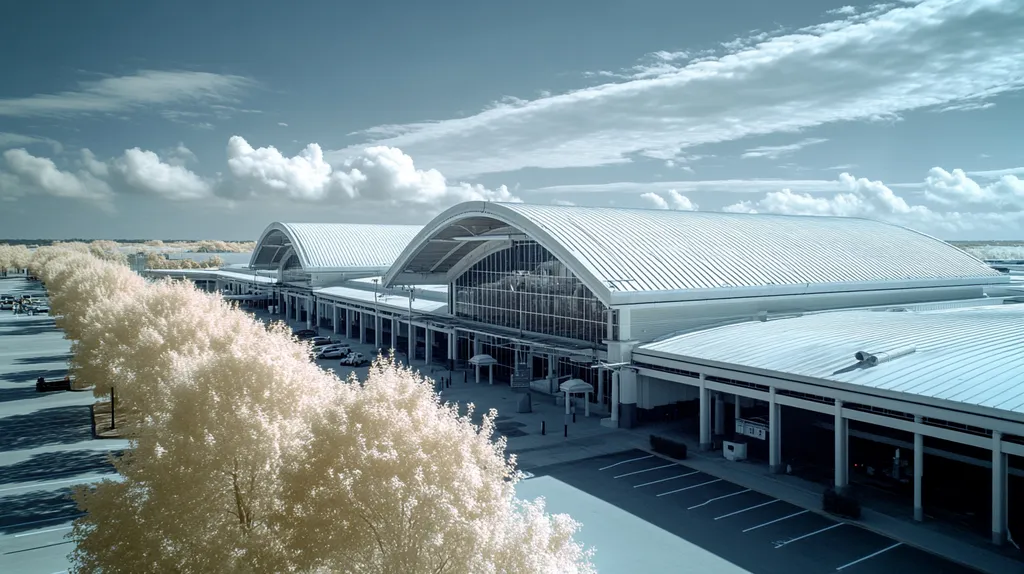
SECTION 5: EVIDENCE-BASED ALTERNATIVES
Industrial roofing failures cost facility owners billions annually in repairs, replacements, and operational disruptions. Yet research shows that 85% of these failures stem from outdated approaches to materials, maintenance, and design. By adopting evidence-based alternatives, owners can extend roof lifespans by 15-20 years while reducing lifetime costs by up to 40%. The key lies in understanding and implementing proven strategies that maximize return on investment.
Advanced Roofing Materials Selection
Material selection directly impacts both initial costs and long-term performance. Modern engineered membranes offer superior resistance to UV radiation, chemical exposure, and mechanical stress compared to traditional built-up systems.
New composite materials combine the durability of metal with the flexibility of membrane systems. These hybrids provide enhanced protection against extreme weather while reducing maintenance requirements.
Smart material selection must account for specific facility conditions. Areas with high chemical exposure need specialized membranes, while regions with extreme temperature fluctuations require materials with superior expansion properties.
Proper material staging and installation techniques significantly impact performance. Even premium materials fail prematurely when improperly handled or installed under adverse conditions.
Implementing Proactive Maintenance Strategies
A commercial roof’s longevity heavily relies on consistent maintenance and professional care. Regular inspections can identify potential issues before they develop into costly repairs.
Digital monitoring systems now enable real-time tracking of roof conditions. These technologies can detect moisture infiltration and membrane stress before visible damage occurs.
Seasonal maintenance requirements demand specific focus areas. Spring inspections should address winter damage, while fall maintenance prepares the system for severe weather.
Documentation of all maintenance activities creates valuable historical data. This information helps predict potential issues and optimize maintenance scheduling for maximum effectiveness.
Effective Design Principles for Durability
Modern design approaches prioritize system integration over individual component performance. This holistic strategy ensures all rooftop elements work together to protect the building envelope.
Proper drainage design remains crucial for long-term performance. Even minor slope miscalculations can create ponding conditions that accelerate material degradation.
Strategic placement of rooftop equipment and penetrations minimizes potential leak points. Careful coordination between trades during installation preserves system integrity.
Design must accommodate building movement and thermal expansion. Flexible details around penetrations and proper expansion joints prevent stress-related failures. (source: RGB Construction Services)
SECTION 6: TEST AND VERIFY
Industrial roof failures cost facility owners millions annually, yet most catastrophic issues could be prevented through systematic testing and verification. Without proper performance monitoring, minor problems often escalate into major structural threats that compromise operations and safety. Modern testing approaches can extend roof life by 40% while slashing emergency repair costs – but only when properly implemented and maintained.
Analyzing Roofing Performance Metrics
Core performance metrics provide early warning of developing issues before they become visible problems. Key indicators include membrane adhesion strength, insulation R-value retention, and drainage efficiency measurements.
Thermographic scanning reveals hidden moisture intrusion and insulation failures that visual inspections miss. These scans can detect problems months or years before water damage appears on interior surfaces.
Load testing verifies structural integrity, particularly after equipment installations or severe weather events. Understanding load distribution patterns helps prevent локalized failures that can cascade into system-wide problems.
Chemical exposure testing is crucial for facilities with industrial emissions or high pollution levels. Regular analysis of membrane degradation rates enables targeted reinforcement of vulnerable areas.
Verification Methods and Tools
Modern verification tools provide unprecedented insight into roof system performance. Digital moisture meters, infrared cameras, and nuclear gauges deliver precise data about membrane and insulation conditions.
Drone-based imaging systems create detailed surface maps while minimizing foot traffic damage. This technology enables comprehensive documentation of roof conditions without risking worker safety.
Electronic leak detection identifies breaches in the waterproofing system with pinpoint accuracy. This capability dramatically reduces investigation time and repair costs compared to traditional flood testing.
Regular core sampling verifies material thickness and composition throughout the roof’s service life. These physical specimens provide concrete evidence of weathering effects and help validate warranty claims.
Continuous Monitoring and Improvement Approaches
Commercial roofs require ongoing performance verification to achieve their full lifespan potential. Regular inspections combined with continuous monitoring systems can extend roof life by 15-30 years while reducing lifetime maintenance costs. (source: RoofCorp)
Smart sensor networks provide real-time data on membrane stress, moisture levels, and structural movement. This information enables truly predictive maintenance rather than reactive repairs.
Documentation tracking systems create comprehensive performance histories that guide maintenance decisions. Digital records help identify emerging patterns and optimize repair timing.
Regular performance reviews compare actual results against design specifications. These assessments help refine maintenance protocols and validate improvement strategies.
The Bottom Line
Industrial roof failures cost facility owners over $2 billion annually, with 85% stemming from preventable oversights in design, materials selection, and maintenance.
The evidence shows that proper material selection, backed by scientific testing and systematic maintenance, can extend roof lifespans by 15-20 years while reducing lifetime costs by up to 40%.
Modern monitoring technologies and advanced materials now provide unprecedented opportunities to protect these critical assets, but only when supported by evidence-based maintenance protocols and proper verification methods.
As industrial facilities face increasing environmental challenges and operational demands, the difference between success and failure often lies in rejecting outdated practices in favor of proven, data-driven approaches to roofing system management.
FREQUENTLY ASKED QUESTIONS
Q. What misconceptions exist about commercial roofs?
A. Many believe that all materials perform the same under industrial conditions. This can lead to costly selection mistakes, as different materials react uniquely to environmental factors and usage.
Q. How do environmental factors affect an industrial roof?
A. Weather patterns greatly influence material durability and lifespan. For instance, roofs in humid climates might deteriorate faster than those in dry areas due to moisture and temperature variations.
Q. Why is proper maintenance essential for a commercial roof?
A. Regular maintenance helps identify small issues before they escalate into major problems. This proactive approach can extend the roof’s lifespan and avoid costly emergency repairs or replacements.
Q. What are the costs associated with misinformation about roofs?
A. Misinterpreting information can lead to poor design and material choices. These decisions may result in expensive emergency repairs, increased downtime, and potential safety hazards for staff.
Q. How can owners prepare for extreme weather impacts on industrial roofs?
A. Owners should consider materials designed for severe weather, implement robust drainage systems, and address any weak installation areas that could fail under stress.
Q. What role does installation quality play in roof longevity?
A. Installation quality is crucial, as improper techniques can lead to premature failures. Ensuring correct installation of components like flashings and membranes is key to performance.
Q. How do emerging technologies enhance roof maintenance and performance?
A. Technologies like digital monitoring systems provide real-time data on roof conditions. This allows for predictive maintenance, significantly extending roof life while reducing unexpected costs.
